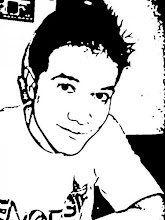Tugas kelompok :
1. Buat kajian teoritis ttg. Periklanan ( sumber boleh dari mana saja ), mencakup : definisi, bentuk-bentuk periklanan, keunggulan dan kelemahan.
2. Buat resume dari bacaan yang saya lampirkan. Siapkan minimal tiga pertanyaan berkaitan dengan bacaan tersebut.
NIH RESUMENYA....
The Power Of Advertising
In 1882, Harley Procter convinced the board of Procter & Gamble to give him $ 11,000 for an outdoor advertising campaign for Ivory Soap. The board was skeptical, but Procter’s status as son of one of the founders probably helped the board see things his way. Soon after, Procter’s ads for Ivory Soap started showing up on street : cars, fences, storefronts, and in magazines. The ads boasted that Ivory Soap was “99 44/100 percent pure” and encouraged people to tell the company what they thought about the product. Before long, P&G’s Cincinnati headquarters was deluged with responses from satisfied Ivory Soap users. Thus, a modern advertising giant was born.
For decades, P&G has ben among the world’s leading advertisers ( its $ 1.7 billion in advertising spending in 1999 ranked second only to General Motors). In 1933, it created the radio soap opera as a vehicle to promote its Oxydol brand laundry detergent. In a typical 15-minute program, the nam Oxydol was mentioned about two dozen times. Within a year, sales of the product had doubled. In the 1950s, P&G turned its attention to television and was sponsoring 13 nationally televised soap operas by the middle of that decade. By the 1970s, characters from P&G ads had become pop culture icons. You may remember Mr. Whipple, who pleaded with shoppers not to squeeze the Charmin, or Rosie the waitress, who always had a roll of Bounty towels to clean up any spill. A 1985 surveyshowed that 93 percent of female shoppers recognized the smiling face of Mr. Clean, while only 56 percent could identify the Vice President George Bush.
Unquestionably, television has proven very successful for P&G. the company used primarily televion to introduce consumers to new products like Crest toothpaste and Tide detergent, which are now cornerstones of P&G empire. In the 1980s, the company produced a series of TV ads that successfully repositioned Pringles potato chips as a cool brand for young people, giving the product a major boost after 20 years of sluggish sales.
P&G is very careful with its ad placement, taking pains to avoid controversial programming. For example, in 2000 it chose not to advertise in a syndicated show starring gay-bashing psychologist Dr. Laura Schlessinger. “We like to keep our brands out of controversy,” says Robert Wehling, P&G’s global marketing officer, “We just feel that a really controversial show is not a good environment for a brand message because, by its very nature, it divides the audience into for and against.” Basically, it is a challenge to watch a few hours of television programming and not see an ad for some P&G product.
In 1997, P&G spent approximately & 1.3 billion on TV advertising. But by 1999, P&G’s televison budget, although still massive, had fallen 16 percent to $ 1.1 billion as the company began to diversify its media mix. In 1999, the company increased magazine advertisin by 17 percent, while newspaper ad spending nearly tripled. P&G has also explored direct mail and internet marketing. An example of this new, more varied approach was the 2000 introduction of Physique, a line of hair-care products aimed to young women. In November 1999, P&G began its push for Physique by mailing out a half-million samples and launching a Physique web site. If you e-mailed the web site link to 10 other people, you were rewarded with a free bottle of shampoo. In December, ads for Physique began appearing on glasses and napkins at bars near college campuses. For example, some cocktail napkins featured a young man and women in silhouette, with a caption reading, “ New scientific evidence proves people with great hairstyles are less likely to go home alone.” The goal was for students to see these ads just before holiday breaki, so they would talk about the product when they went home to their family and friends. Only in January, a few weeks before the product was shipped to stores, did television ads begin to appear. The typical P&G brand spends 60-80 percent of its advertising budget on television. With Physique, it was well under 50 percent.
P&G vice president Mark Schar believes his company must better target its marketing pitches, and that traditional TV advertising reaches too broad an audience. Wehling still believes in television for some products, but he thinks the internet best suits others.”One example is Cover Girl,” he says. “ When a girl first starts using cosmetics, you’d like to have a robust Web Site that she can go to that guides her every step of the way on how to deal with everything from skin cleansing to moisturizing.” But at least one advertising agency executive isn’t sure. “the Internet and direct mail are good for selected marketing, but P&G needs to move a lot of its product in mass,” the exec says. “ When an analysis is done carefully, they may find a need to do more TV, more traditional media, not less.”
( Source : Consumer Behavior and Marketing Strategy. 2003. J. Paul Peter & Jerry C. Olson )
GUD LUCK.......

Tidak ada komentar:
Posting Komentar